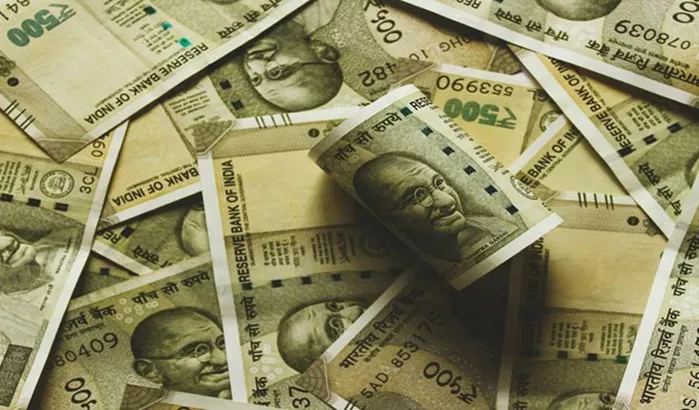The Reserve Bank of India (RBI) introduced the 7.75% Savings (Taxable) Bonds in 2018 as a secure investment option for Indian residents. These bonds offered a fixed interest rate of 7.75% per annum and were considered a safe haven for conservative investors seeking regular income. However, it’s important to note that this scheme was discontinued on May 28, 2020, due to declining interest rates. Despite their discontinuation, understanding the features and benefits of these bonds can provide valuable insights for investors exploring similar instruments.
What Were RBI 7.75% Savings Bonds?
RBI 7.75% Savings Bonds were government-backed securities that provided a fixed interest rate of 7.75% per annum. These bonds had a tenure of seven years and were available to resident individuals and Hindu Undivided Families (HUFs). The bonds were non-transferable, non-tradable, and could not be used as collateral for loans [Source].
Key Features
- Interest Rate: Fixed at 7.75% per annum.
- Tenure: 7 years from the date of issue.
- Minimum Investment: ₹1,000, with no maximum limit.
- Interest Payment Options: Cumulative (paid at maturity) or non-cumulative (paid semi-annually).
- Taxation: Interest income was taxable as per the investor’s income tax slab.
- Premature Withdrawal: Allowed for senior citizens with specific lock-in periods based on age.
Eligibility Criteria
The bonds were open to:
- Resident individuals, including joint holders.
- Hindu Undivided Families (HUFs).
Non-Resident Indians (NRIs) were not eligible to invest in these bonds [Source].
How to Purchase RBI 7.75% Savings Bonds
Investors could purchase these bonds through:
- Designated branches of State Bank of India (SBI) and its associate banks.
- Nationalized banks.
- Private sector banks like HDFC Bank, ICICI Bank, and Axis Bank.
- Stock Holding Corporation of India Ltd. (SHCIL).
The application process required submission of Know Your Customer (KYC) documents, including PAN card, address proof, and bank account details. The bonds were issued in demat form and held in the Bond Ledger Account (BLA) of the investor [Source].
Interest Payment Options
Investors had two options for receiving interest:
- Cumulative: Interest was compounded and paid along with the principal at maturity.
- Non-Cumulative: Interest was paid every six months.
The choice between cumulative and non-cumulative options depended on the investor’s need for regular income or lump-sum returns at maturity.
Tax Implications
Interest income from these bonds was taxable as per the investor’s income tax slab. Tax Deducted at Source (TDS) was applicable. However, the bonds were exempt from wealth tax [Source].
Premature Withdrawal Facility
While the standard tenure was seven years, senior citizens were allowed premature withdrawal based on their age:
- 60 to 70 years: After 6 years.
- 70 to 80 years: After 5 years.
- Above 80 years: After 4 years.
In cases of premature withdrawal, 50% of the interest due for the last six months of the holding period was deducted [Source].
Advantages of RBI 7.75% Savings Bonds
- Safety: Backed by the Government of India, offering low credit risk.
- Attractive Returns: Higher interest rate compared to other fixed-income instruments at the time.
- Flexible Interest Payment: Choice between cumulative and non-cumulative options.
- No Maximum Investment Limit: Allowed for substantial investments.
Limitations
- Illiquidity: Bonds were non-transferable and non-tradable.
- Taxable Interest: Interest income was fully taxable.
- Not Available to NRIs: Non-Resident Indians were not permitted to invest.
Alternatives to RBI 7.75% Savings Bonds
With the discontinuation of these bonds, investors can consider the following alternatives:
- Floating Rate Savings Bonds: These bonds offer interest rates linked to the National Savings Certificate (NSC) rate, with a spread of 35 basis points. The interest rate is reset every six months [Source].
- National Savings Certificate (NSC): A government-backed savings instrument with a fixed interest rate and a tenure of five years.
- Kisan Vikas Patra (KVP): A savings certificate scheme with a fixed interest rate and a maturity period of 124 months.
- Senior Citizens Savings Scheme (SCSS): Designed for individuals above 60 years, offering regular income with a tenure of five years.
Conclusion
The RBI 7.75% Savings Bonds were a popular investment choice for individuals seeking secure and fixed returns. Although the scheme has been discontinued, understanding its features helps investors make informed decisions when exploring similar investment options. For those new to investing, it’s essential to research and consider various instruments that align with their financial goals and risk appetite. Resources like Investing in Stocks Market and Stocks Market For Beginners can provide valuable insights into building a diversified investment portfolio.
Related topics:


